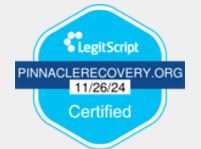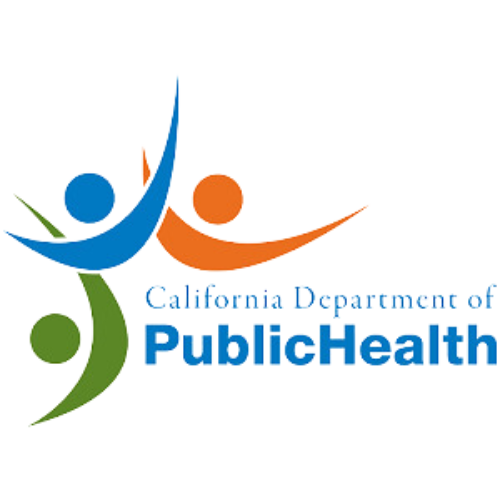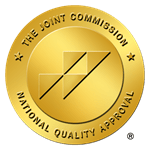Experts recognize several behavioral addictions that can severely impact your daily functioning and well-being. The most established is gambling disorder, affecting 1.2% of people globally, while gaming disorder has gained WHO recognition since 2019. Compulsive sexual behavior, food-related dependencies, and shopping addiction are also identified patterns, though some remain controversial in clinical settings. Understanding these conditions' distinct characteristics and risk factors will help you identify potential warning signs and treatment options.
 While behavioral addictions encompass diverse compulsive activities, gambling disorder stands as the most thoroughly researched and widely recognized non-substance addiction. If you're struggling with gambling, you'll exhibit at least four specific behaviors within a 12-month period, including preoccupation with betting, loss of control, and chasing losses. The disorder affects roughly 1.2% of people globally, with risk factors including family history and co-occurring mental health conditions.
You'll notice severe consequences across multiple life domains: financial devastation, relationship breakdowns, and declining mental health. Many individuals develop cognitive distortions that lead them to believe they can control random gambling outcomes through skills or rituals. The brain's dopamine response becomes less sensitive over time, requiring increasingly risky bets to achieve the same excitement. Today's increased accessibility concerns, particularly with online gambling platforms, have heightened vulnerability among younger populations. Physical activity can provide a healthy outlet for managing urges and reducing stress during recovery. Treatment typically combines cognitive-behavioral therapy with support groups, focusing on modifying harmful thought patterns and preventing relapse.
While behavioral addictions encompass diverse compulsive activities, gambling disorder stands as the most thoroughly researched and widely recognized non-substance addiction. If you're struggling with gambling, you'll exhibit at least four specific behaviors within a 12-month period, including preoccupation with betting, loss of control, and chasing losses. The disorder affects roughly 1.2% of people globally, with risk factors including family history and co-occurring mental health conditions.
You'll notice severe consequences across multiple life domains: financial devastation, relationship breakdowns, and declining mental health. Many individuals develop cognitive distortions that lead them to believe they can control random gambling outcomes through skills or rituals. The brain's dopamine response becomes less sensitive over time, requiring increasingly risky bets to achieve the same excitement. Today's increased accessibility concerns, particularly with online gambling platforms, have heightened vulnerability among younger populations. Physical activity can provide a healthy outlet for managing urges and reducing stress during recovery. Treatment typically combines cognitive-behavioral therapy with support groups, focusing on modifying harmful thought patterns and preventing relapse.
 Despite growing evidence of addiction-like patterns in compulsive sexual behaviors, the classification of sex and pornography dependencies remains hotly debated within psychiatric circles. While the ICD-11 recognizes Compulsive Sexual Behavior Disorder (CSBD), the DSM-5-TR hasn't formally acknowledged sex or porn addiction as distinct diagnoses. The condition often leads to excessive screen time replacing in-person social interactions. Studies show that 40 percent of women regularly consume online pornographic content. Treatment approaches combining pharmacotherapy with psychotherapy have shown optimal results in managing these behaviors.
You'll find that research on neurobiological mechanisms of CSBD shows addiction-like changes in brain reward circuits, particularly in the amygdala and ventral striatum. FMRI studies reveal amplified cue reactivity and desensitization effects similar to substance addictions. While gender differences in CSBD prevalence aren't fully understood, the core diagnostic criteria focus on loss of control and continued behavior despite negative consequences. The key challenge lies in distinguishing between high sexual desire and truly problematic behavior that causes functional impairment.
Despite growing evidence of addiction-like patterns in compulsive sexual behaviors, the classification of sex and pornography dependencies remains hotly debated within psychiatric circles. While the ICD-11 recognizes Compulsive Sexual Behavior Disorder (CSBD), the DSM-5-TR hasn't formally acknowledged sex or porn addiction as distinct diagnoses. The condition often leads to excessive screen time replacing in-person social interactions. Studies show that 40 percent of women regularly consume online pornographic content. Treatment approaches combining pharmacotherapy with psychotherapy have shown optimal results in managing these behaviors.
You'll find that research on neurobiological mechanisms of CSBD shows addiction-like changes in brain reward circuits, particularly in the amygdala and ventral striatum. FMRI studies reveal amplified cue reactivity and desensitization effects similar to substance addictions. While gender differences in CSBD prevalence aren't fully understood, the core diagnostic criteria focus on loss of control and continued behavior despite negative consequences. The key challenge lies in distinguishing between high sexual desire and truly problematic behavior that causes functional impairment.
 Many people struggle with compulsive buying disorder, affecting 5-8% of the global population and disproportionately impacting women, who comprise 80-90% of diagnosed cases. The rise of mobile payment addiction and compulsive online shopping has intensified this behavioral addiction, as e-commerce platforms now provide 24/7 access and targeted advertising that can trigger impulsive spending episodes. Research shows that personality traits like impulsivity and materialism significantly increase susceptibility to shopping addiction. The onset of compulsive buying behavior typically occurs during late adolescence or early adulthood.
You'll find that shopping addiction often co-exists with depression, anxiety, and substance abuse disorders. While not formally recognized in the DSM-5, it shows clear patterns of behavioral addiction, including withdrawal symptoms and tolerance. Treatment typically involves cognitive-behavioral therapy, financial counseling, and support groups. The modern era has made concealment easier, as online shopping removes physical constraints and social barriers, making early intervention vital for positive outcomes. Recent studies in Turkey indicate that psychiatric distress is a significant predictor of problematic shopping behaviors.
Many people struggle with compulsive buying disorder, affecting 5-8% of the global population and disproportionately impacting women, who comprise 80-90% of diagnosed cases. The rise of mobile payment addiction and compulsive online shopping has intensified this behavioral addiction, as e-commerce platforms now provide 24/7 access and targeted advertising that can trigger impulsive spending episodes. Research shows that personality traits like impulsivity and materialism significantly increase susceptibility to shopping addiction. The onset of compulsive buying behavior typically occurs during late adolescence or early adulthood.
You'll find that shopping addiction often co-exists with depression, anxiety, and substance abuse disorders. While not formally recognized in the DSM-5, it shows clear patterns of behavioral addiction, including withdrawal symptoms and tolerance. Treatment typically involves cognitive-behavioral therapy, financial counseling, and support groups. The modern era has made concealment easier, as online shopping removes physical constraints and social barriers, making early intervention vital for positive outcomes. Recent studies in Turkey indicate that psychiatric distress is a significant predictor of problematic shopping behaviors.
Gambling Disorder: The Most Recognized Behavioral Addiction

Gaming Disorder's Growing Recognition in Mental Health
Three key developments have propelled gaming disorder into mainstream psychiatric recognition: its 2019 WHO classification, mounting evidence of its neurobiological similarities to substance addictions, and rising global prevalence rates reaching up to 15.6% in some populations. You'll find prevalence rates trends varying considerably across regions, with Asian countries reporting 10-15% among youth, while Western nations show 1-10%. Recent research in Saudi Arabia found that 62.1% of adolescents exhibited gaming addiction symptoms. Factors influencing diagnostic criteria include preoccupation, withdrawal symptoms, tolerance development, and unsuccessful quit attempts. The condition's impact manifests through anxiety, depression, and academic dysfunction. Digital phenotyping tools are increasingly being used to detect early signs of gaming disorder through smartphone and device data analysis. Effective management requires multidisciplinary treatment approaches involving healthcare professionals and support services. While the DSM-5 lists Internet Gaming Disorder as requiring further study, the ICD-11's formal recognition has spurred development of specialized clinics and intervention programs worldwide, though many cases remain undiagnosed due to stigma and limited access to treatment.The Controversy Surrounding Sex and Pornography Dependencies

Food-Related Compulsive Behaviors and Brain Reward Systems
Scientific research has established remarkable parallels between food addiction and substance use disorders, particularly in their effects on brain reward systems. When you regularly consume highly palatable foods, your brain undergoes adaptations similar to those seen in drug addiction, including decreased dopamine receptor density and diminished reward sensitivity. Complex homeostatic controls work alongside reward mechanisms to regulate food intake patterns. Chronic stress exposure can significantly dysregulate eating behaviors and increase cravings for palatable foods. Your brain's response to food cues becomes heightened, especially if you're overweight or struggle with food addiction. You'll experience increased activation in reward regions like the prefrontal cortex, orbitofrontal cortex, and amygdala when exposed to food-related triggers. These cue-induced reward responses can drive compulsive eating behaviors, as your brain requires increasingly larger amounts of stimulation to achieve the same pleasurable effect. Research shows that prolonged exposure to a cafeteria diet alters neural activity in the brain's reward system, particularly in the ventral tegmental area. The neuroadaptations persist even after you stop consuming problematic foods, suggesting long-term changes in reward circuitry.Shopping and Other Emerging Behavioral Addiction Patterns













